Essential fine motor skills are crucial for children aged 5-6 as they prepare for school and daily tasks. These skills include holding a pencil correctly, tracing shapes, cutting along lines, folding paper, and tying shoelaces. Activities like coloring, drawing, and threading beads help children develop these essential fine motor skills. Strengthening these abilities builds their confidence, independence, and creativity, which sets them up for long-term success in school and life.
Parents and guardians who suspect their child might need extra help with essential fine motor skills can explore different strategies to support development. Occupational therapy, sensory activities, and targeted play can significantly boost a child’s ability to perform daily tasks efficiently. For a more in-depth look at the importance, benefits, and practical techniques for nurturing fine motor skills, read on to discover how best to support your child’s development.
Key Takeaways
- Children aged 5-6 learn to hold a pencil correctly, an essential fine motor skill for writing.
- Spatial awareness is improved through drawing detailed shapes, fostering cognitive development.
- Cutting shapes accurately with scissors refines precision, control, and critical fine motor skills.
- Threading tiny beads onto a string enhances finger dexterity and motor coordination.
- Independence in tasks like tying shoelaces combines cognitive and motor skills, supporting overall development.
Understanding Fine Motor Skills
When considering fine motor skills, it’s essential to understand that they involve the coordination of small muscles in the hands, fingers, and wrists. These skills enable children aged 5-6 to perform precise tasks such as writing, drawing, cutting, and dressing independently with improved accuracy. Fine motor skills are essential to a child’s cognitive development and physical abilities, and they play a pivotal role in their lives inside and outside the classroom.
Developing these skills is gradual, often facilitated by supportive environments and engaging activities. Therapy can also be a resource for children struggling to master these skills. Successful fine motor development includes tasks such as holding a pencil correctly, cutting with scissors, and manipulating small objects—all requiring hand-eye coordination and precision.
Furthermore, mastery of fine motor skills lays a foundation for future academic success. These skills not only promote independence in everyday tasks but also contribute to the development of a child’s self-confidence and self-esteem. Thus, understanding and supporting fine motor skills development is essential to nurturing children’s children.
Essential Fine Motor Skills Milestones
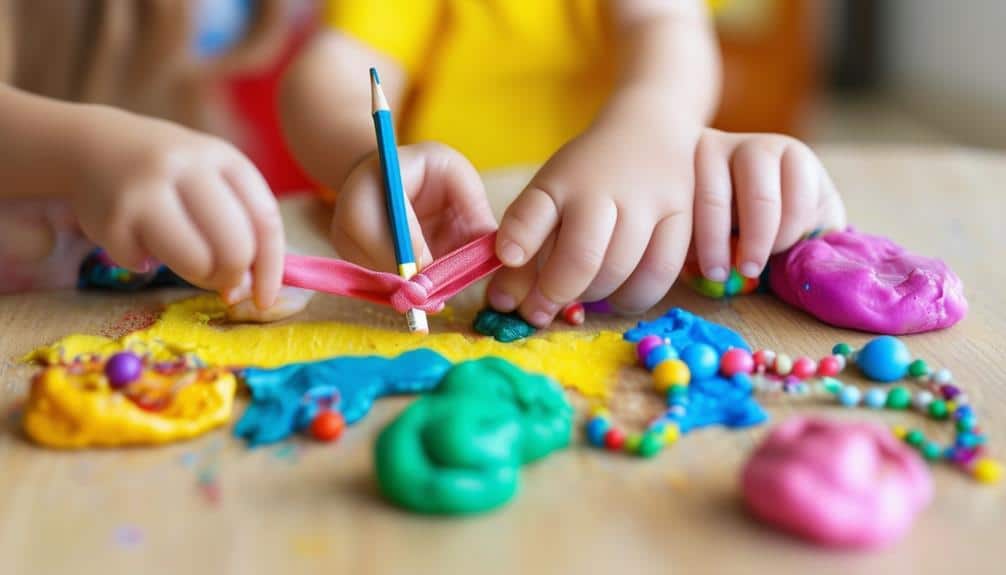
As children age 5-6, several critical fine motor skills milestones are expected to be achieved, indicative of their physical and cognitive development. Their fine motor skills development is reflected in the precision of their hand movements. This is evident when holding a pencil correctly and displaying increased spatial awareness in tasks such as drawing detailed shapes and figures with proportional features. These activities not only refine motor skills but also enhance hand-eye coordination.
Their cutting skills also improved significantly, demonstrated by their ability to cut shapes with right angles and curves accurately. This precise hand task requires them to make small muscle movements, contributing to refining their motor skills.
Children of this age also develop problem-solving abilities, often intertwined with motor skill tasks. For example, folding paper accurately in half requires the use of their hands and their minds to achieve the desired result. Similarly, tying shoelaces and buckling belts involve both cognitive and motor skills. These milestones indicate their ongoing development, preparing them for more complex tasks in the future.
Importance of Fine Motor Skills
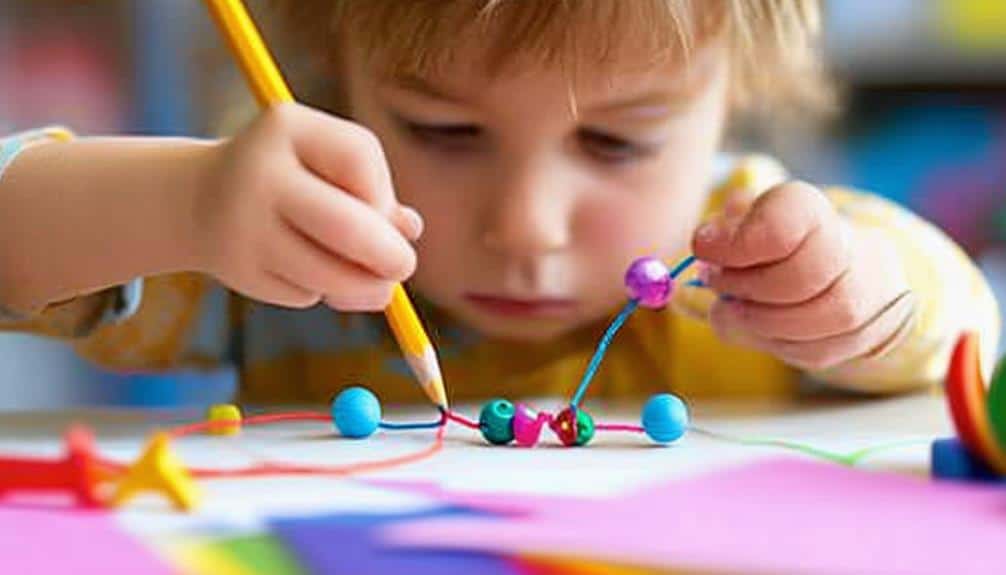
They understand the importance of fine motor skills in children aged 5-6. These skills form the foundation for many academic tasks and nurture children’s independence, confidence, and creativity. These tasks range from buttoning clothes to cutting shapes to holding writing utensils correctly.
Pediatric occupational therapy focuses on developing fine motor skills in early childhood, which is fundamental to a child’s overall growth. It enhances a child’s abilities by improving hand-eye coordination and refining the neural pathways essential for reading and mathematical reasoning. Through targeted activities, pediatric occupational therapy helps build a strong foundation for future academic achievements and overall success.
To illustrate, consider the following:
- Fine motor skills aid in executing small movements that occur in the fingers in coordination with the eyes. Developing these skills enhances academic success by improving writing and spatial awareness.
- Though different, Gross and fine motor skills are crucial to a child’s fine motor skill development. A child’s motor skills aid in mastering more significant movements, while the latter focuses on intricate tasks.
- Finally, mastering these skills fosters a child’s independence while boosting the child’s creativity.
Strategies for Enhancing Motor Skills
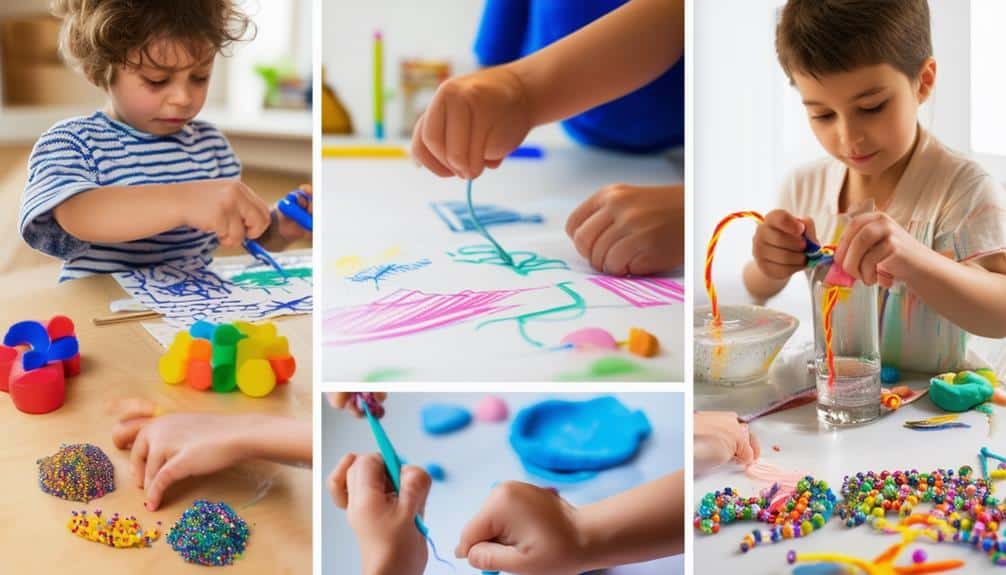
Building on the understanding of the importance of fine motor skills, let’s now explore various strategies that can be employed to enhance these skills in children aged 5-6. Motor skill enhancement, whether fine or gross, is a vital aspect of early childhood development. It involves activities designed to improve hand coordination, motor control, and the functioning of small muscle groups.
One practical approach is occupational therapy, which includes repetitive play to enhance muscle memory and coordination. This treatment is essential in child development as it targets specific developmental stages using age-appropriate toys.
Another proven strategy is promoting independence in daily activities. This boosts confidence and fosters mastery of motor skills.
Outdoor exploration promotes gross motor skills and spatial awareness. It also physically engages children, supporting overall motor development.
Lastly, sensory activities, which engage all senses, are beneficial in refining motor skills and promoting cognitive growth.
| Strategy | Impact on Motor Skills |
|---|---|
| Repetitive Play | Enhances muscle memory and coordination |
| Independence in Daily Activities | Boosts confidence and mastery of motor skills |
| Outdoor Exploration | Develops gross motor skills and spatial awareness |
| Sensory Activities | Refines motor skills and promotes cognitive growth |
Activities for Motor Skill Development
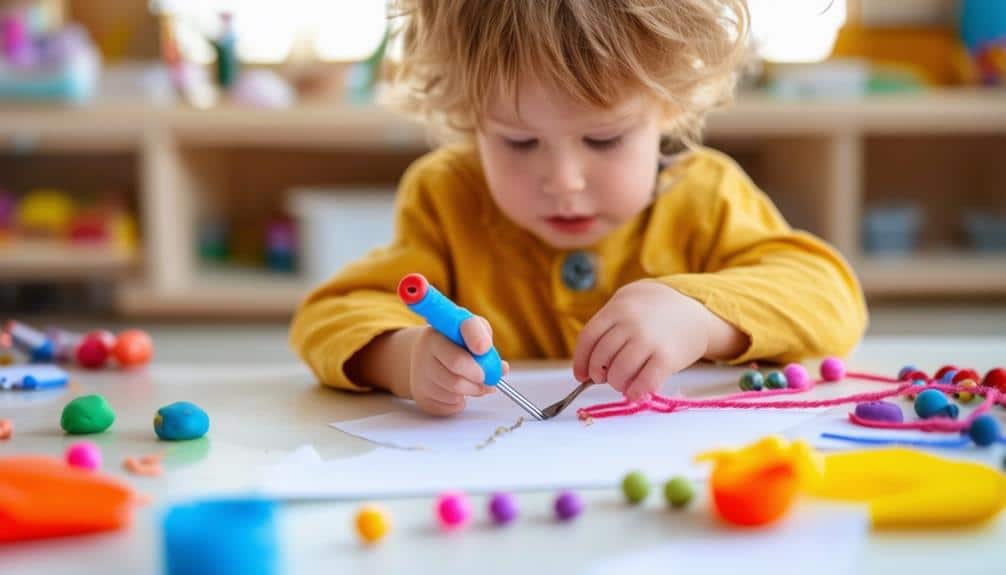
In child development, certain engaging activities, such as coloring, cutting with scissors, or playing with building blocks, have been identified to enhance motor skills in 5-6-year-olds greatly. These activities, designed to foster fine motor skills, are critical for a child’s physical growth and cognitive development.
- Coloring and Drawing: This activity develops fine motor skills by encouraging control over small objects such as crayons or markers. It helps to improve the child’s hand-eye coordination and sensitivity.
- Cutting with Scissors: This activity is excellent for developing hand precision. It encourages children to manipulate scissors correctly, fostering fine control and coordination.
- Playing with Building Blocks strengthens hand-eye coordination and spatial awareness. It involves stacking and connecting blocks, which promotes precision and control.
Additional activities like threading beads and playing with playdough can be introduced to enhance a child’s fine motor skills further. Tchild’sg beads improve hand dexterity and finger movements, while playdough provides a sensory exploration that refines fine motor skills. Every child deserves rich, hands-on experiences that allow them to grow and develop these essential skills.
Recognizing Fine Motor Delays
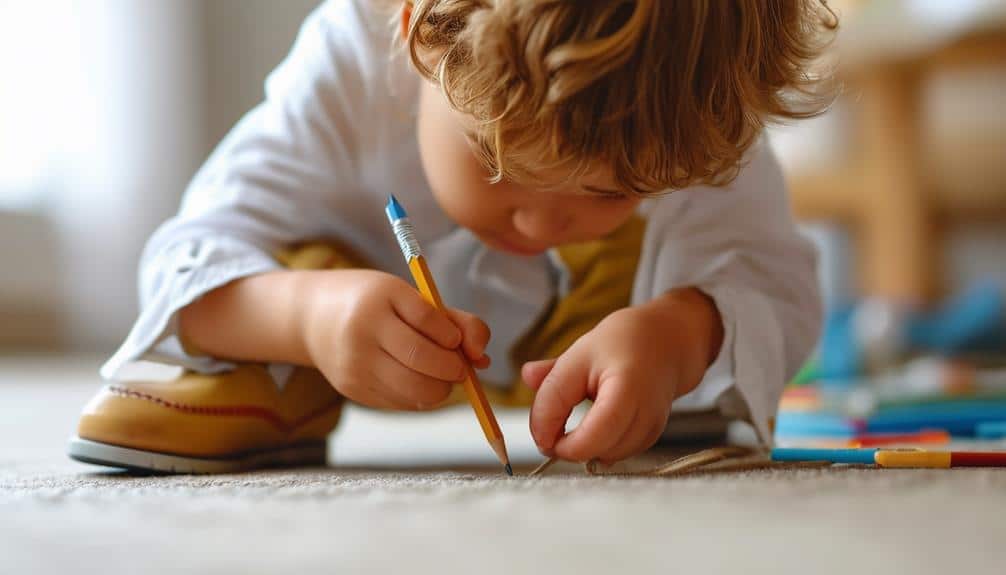
While skill development progresses at varying rates, parents and educators should be alert for signs of acceptable motor delays. These delays may become apparent through challenges such as difficulty holding a pencil or crayon, struggling with buttoning clothes, poor scissor skills, or messy handwriting. These difficulties could indicate that the child’s ability to perform precise assessments and coordination is compromised.
Early identification of acceptable motor delays is essential. Recognizing these signs enables immediate intervention, significantly enhancing the child’s overall development and success. Early intervention allows children to open up to their full potential and thrive in various aspects of life.
Occupational therapists play a pivotal role in addressing these delays. They provide tailored strategies and exercises to improve the child’s fine motor skills. These exercises are designed to directly target the areas of difficulty, enhancing the child’s strength, agility, and coordination.
Frequently Asked Questions
What Fine Motor Skills Should a 5 6 Year Old Have?
Five—to six-year-olds should have fine motor skills such as pencil control, scissor skills, buttoning practice, and hand-eye coordination. These can be nurtured through creative activities like drawing, coloring, playdough fun, and painting.
What Are the Big 6 Fine Motor Skills?
The ‘major 6’ essential fine motor skills encompass pincer grasp, hand-eye coordination, finger dexterity, scissor skills, writing readiness, and drawing abilities. These skills involve proficiency in activities such as buttoning, cutting, and coloring with precision.
What Fine Motor Skills Can a Child Typically Perform at 6?
At age six, children typically exhibit advanced fine motor skills, such as pincer grasp, hand-eye coordination, dexterity development, scissor skills, writing readiness, buttoning buttons, threading beads, cutting shapes, drawing lines, and tying knots.
What Is Fine Motor Skill Age 6?
Fine motor skills at age 6 involve enhanced finger dexterity, hand-eye coordination, and a pincer grasp. Children display precision in writing skills, drawing, scissor control, buttoning clothes, threading beads, and refined coloring techniques.
Conclusion
To sum up, fine motor skills play a significant role in a child’s development between the ages of 5 and 6. Enhancing these skills contributes to a child’s ability to engage in daily activities, perform academically, and gain independence. A range of strategies and activities can support this critical aspect of development. Recognizing and addressing delays early on can significantly improve the child’s overall growth and success.

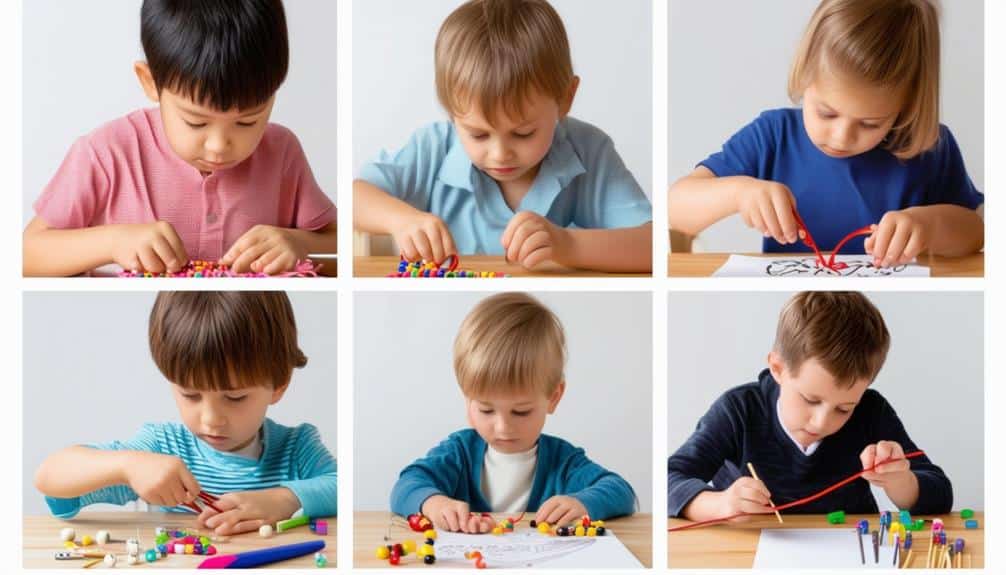
Recent Comments